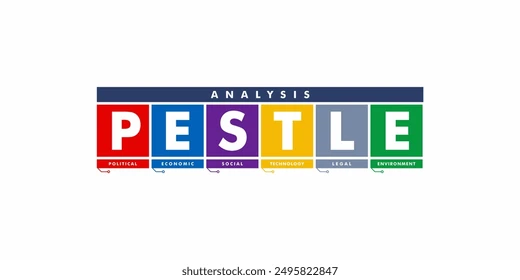
Zurück zum Hub
Blog
Marketing
Master SWOT analysis: Reveal your winning strategy

Mathieu Co-founder
Veröffentlicht am 15. Mai 2025Aktualisiert am 3. Aug. 2025
A SWOT analysis is a strategic planning tool used to identify an organization’s Strengths, Weaknesses, Opportunities, and Threats. It helps businesses understand their current position and plan for the future. By evaluating both internal and external factors, a SWOT analysis provides a clear roadmap for making informed decisions and improving strategic initiatives. In this article, we will walk you through the key components, a step-by-step process to conduct your own SWOT analysis, and tips for leveraging the insights gained.
Key Takeaways
SWOT analysis helps businesses identify strengths, weaknesses, opportunities, and threats to align their strategies with real-world dynamics.
Regularly updating your SWOT analysis ensures it remains relevant and effective for informed decision-making.
Collaborating with a diverse team during the SWOT process enhances insights and leads to more robust strategic decisions.
Understanding SWOT Analysis
A SWOT analysis identifies a powerful decision-making technique that helps businesses identify their:
Strengths
Weaknesses
Opportunities
Threats
At its core, it serves as a foundational tool for strategic planning, guiding organizations in aligning their internal capabilities with external factors to achieve their objectives. A SWOT analysis serves as the basis for comprehensive strategic analysis, allowing businesses to make smarter decisions, preserve their strengths, and plan for future events.
The purpose of a SWOT analysis goes beyond merely identifying areas for improvement; it also highlights competitive advantages that can be leveraged for growth. This ongoing process requires regular updates to reflect recent technological advances and market developments, ensuring that strategic plans remain relevant and effective. Evaluating both internal and external factors, a SWOT analysis assesses an organization’s current and future potential, offering a clear roadmap for strategic initiatives.
Strategic actions from a SWOT analysis must align with overall business objectives to achieve successful outcomes. This alignment ensures that the insights gained from the analysis translate into actionable strategies that drive organizational success.
Whether you’re looking to improve operational efficiencies, explore new market opportunities, or mitigate potential threats, a well-executed SWOT analysis is an indispensable tool in your strategic planning toolkit.
Key Components of SWOT Analysis
A SWOT analysis comprises four main components:
Strengths
Weaknesses
Opportunities
Threats
These elements collectively provide a comprehensive understanding of both internal and external factors that influence an organization’s strategic capability.
In the following subsections, we’ll delve into each component, exploring how they contribute to a holistic view of your business and inform strategic decisions.
Strengths

Strengths in a SWOT analysis refer to internal capabilities that provide the organization with a competitive advantage. These can include world-class customer service, a strong brand reputation, and an innovative culture. Identifying internal strengths requires an examination of financial resources, human capital, and operational capabilities.
Understanding what sets your organization apart allows you to leverage these strengths to improve strategic positioning and apply successful techniques across various initiatives.
Weaknesses
Weaknesses are internal factors that may hinder the organization from achieving its objectives, including internal weaknesses such as:
Operational inefficiencies
Outdated processes
Resource limitations such as a small human resources department
Lack of financial resources
Recognizing weaknesses is crucial, as it allows organizations to proactively address areas needing improvement, serving as a starting point for enhancing projects and initiatives.
Opportunities

Opportunities in a SWOT analysis refer to external factors that can be utilized for growth and improvement. These opportunities often arise from:
Emerging markets
Increased demand
Favorable shifts in regulations
Technological advancements such as AI in business analytics
Identifying and capitalizing on these consumer trends and future trends enables organizations to enhance their competitive edge and pursue promising prospects that lead to positive consumer behavior outcomes.
Threats
Threats encompass external challenges that the organization cannot directly control. These can include new competitors, market shifts, and regulatory changes. Specific threats might involve increased competition from established companies or global events affecting market stability. Understanding and monitoring these real threats is crucial for effectively mitigating risks and ensuring the organization’s resilience.
How to Conduct a SWOT Analysis
Conducting a SWOT analysis process involves a structured step-by-step process that provides a comprehensive evaluation of internal and external factors. This process typically includes setting an objective, gathering a diverse team, brainstorming internal factors, analyzing external factors, and prioritizing findings.
A SWOT analysis, whether applied to business strategy or specific areas like marketing and sales, helps organizations develop strategies aligned with their goals through company analysis. Creativity and regular updates are essential to ensure the analysis remains relevant and effective.
Gather a Diverse Team

Ensuring various perspectives are considered enhances the effectiveness of the SWOT analysis. Involving team members from different departments brings a breadth of insights, making the analysis more comprehensive.
Collaborative engagement fosters a deeper understanding of the organization’s strengths, weaknesses, opportunities, and threats, leading to more robust strategic decisions.
Brainstorm Internal Factors
Understanding internal factors is crucial for leveraging strengths and addressing weaknesses effectively. During brainstorming sessions, the team should list the company’s internal strengths, weaknesses, opportunities, and threats to gain comprehensive insights. Creating a list of guiding questions can help focus discussions and ensure all relevant aspects are covered.
Identifying improvement areas allows teams to develop action plans to address these factors and enhance overall organizational performance.
Analyze External Factors
Evaluating external factors involves understanding market dynamics, competitor strategies, and the competitive landscape. Integrating market research with SWOT analysis helps pinpoint external opportunities and threats that could impact the organization’s success.
Using complementary tools like PESTLE provides a more comprehensive evaluation of the external environment, illuminating factors such as political, economic, social, technological, legal, and environmental influences.
Developing Strategies from SWOT Insights

Developing strategies from SWOT insights enables organizations to create actionable plans that leverage strengths, address weaknesses, capitalize on opportunities, and mitigate threats. Turning prioritized opportunities into structured plans enables businesses to achieve significant growth and improvement.
Continuous monitoring and adjustment of these strategies ensure they remain effective and aligned with organizational goals.
Leverage Strengths
Leveraging a company’s strengths is crucial for gaining a competitive advantage and improving competitive positioning. To identify strengths and identifying key strengths allows businesses to position themselves more favorably in the market.
Encouraging strategic planning technique and thorough analysis allows organizations to harness their internal capabilities for significant benefits and a stronger market position.
Address Weaknesses
Addressing weaknesses requires persistent implementation of remedial actions. Brainstorming practical solutions among team members with technical expertise can help identify effective ways to overcome these weaknesses.
Focusing on key areas that require improvement ensures that the organization can enhance its overall performance and resilience.
Capitalize on Opportunities
When identifying opportunities, consider resources that can improve weaknesses, market gaps, business goals, and competitors’ offerings. Prioritizing opportunities based on their impact and feasibility helps organizations focus on the most promising prospects.
Matching strengths with identified opportunities allows businesses to gain a competitive advantage and pursue actionable strategies for growth.
Mitigate Threats
Organizations must assess external challenges and their potential impact as part of the SWOT analysis. Conducting market research and examining industry trends, competitor activities, regulatory changes, and economic conditions can help identify external threats. Proactive risk management and thorough examination of market tendencies are essential for effectively addressing these threats and ensuring organizational stability.
Creating a SWOT Analysis Template
Creating a SWOT analysis template involves using a structured format, such as a SWOT matrix, to document and visualize the analysis. A swot template can be tailored to fit different needs, including basic layouts or more detailed matrices.
Platforms like Canva offer customizable templates that can be easily edited and shared for collaboration. Using a SWOT matrix helps in collecting information and documenting decision-making, making it easier to identify patterns and strategic insights. Additionally, a planning tool and project management tools can enhance the overall efficiency of these processes.

Common Mistakes to Avoid
To achieve actionable results, it is crucial to prioritize key factors that truly move the needle in a SWOT analysis.
Common mistakes include:
Neglecting to prioritize or weigh the factors identified
Analyzing in isolation without diverse input
Failing to maintain objectivity
Overloaded SWOT analyses can lead to analysis paralysis
A lack of clear expectations can result in a scattered and unproductive process.
Ensuring diverse perspectives and data-backed claims can enhance the effectiveness of the analysis.
Benefits of Using a SWOT Analysis
A SWOT analysis assists in understanding both the positive and negative factors influencing an organization. It provides a clear swot framework for strategic decision-making and supports a structured business planning process. Regularly updating the SWOT analysis ensures strategies remain relevant and effective.
The best outcomes include actionable results and detailed planning, guiding strategic initiatives and strategy formulation towards success.
Enhancing SWOT with Complementary Tools
For a deeper analysis, pairing SWOT with complementary tools like PESTLE, Porter’s 5 Forces, and the TOWS matrix can significantly enhance its effectiveness. PESTLE analysis plays a crucial role. It highlights various factors, including political, economic, social, technological, legal, and environmental.

Integrating market research into the SWOT analysis further enhances the exploration of new opportunities and potential threats.
Real-World Examples of SWOT Analysis
Quantive provides a relevant case study demonstrating the successful application of SWOT analysis in informing strategic decisions. By leveraging SWOT analysis, Quantive focuses on developing winning strategies and adapting to a changing business landscape.

This example illustrates how a comprehensive SWOT analysis can result in a good swot analysis, robust strategic planning, and improved organizational effectiveness using a strategic planning tool through an own swot analysis.
When to Use a SWOT Analysis
SWOT analysis is particularly beneficial during significant transitions or when launching new projects. It can be valuable at any phase of a project, helping to highlight potential paths and necessary adjustments through static analysis.
Conducting a SWOT analysis periodically ensures that organizations remain proactive to changes and opportunities, maintaining strategic agility.
Summary
In summary, a SWOT analysis is an essential strategic planning tool that helps organizations understand their strengths, weaknesses, opportunities, and threats. By regularly updating the analysis and leveraging insights to develop actionable strategies, businesses can achieve significant growth and improvement. The key to success lies in maintaining objectivity, encouraging diverse perspectives, and continuously monitoring and adjusting strategies. Embrace the power of SWOT analysis to navigate the competitive landscape and drive your organization towards success.
Frequently Asked Questions

What is a SWOT analysis?
A SWOT analysis is a handy tool that helps you figure out your organization's strengths, weaknesses, opportunities, and threats, making it easier to plan for success. It’s all about understanding where you stand and where you can go!
How often should a SWOT analysis be updated?
You should update your SWOT analysis regularly to keep up with tech changes and market shifts, so your strategies stay on point. It helps to do this at least annually, or more often if there are significant changes.
What are some common mistakes to avoid in a SWOT analysis?
To nail a SWOT analysis, make sure you prioritize factors, gather input from diverse perspectives, and keep it objective. Avoiding these pitfalls will lead to more accurate and actionable insights!
Can SWOT analysis be used for specific business areas?
Absolutely, SWOT analysis is super flexible and can be focused on specific areas like marketing, production, or sales. It’s a great way to identify strengths, weaknesses, opportunities, and threats tailored to any part of your business!
How can complementary tools enhance a SWOT analysis?
Using tools like PESTLE and market research can really boost your SWOT analysis by giving you deeper insights into external factors. This way, you get a clearer picture and make better decisions!

Klare, transparente Preise ohne versteckte Kosten.
Keine Verpflichtung, Preise, die Ihnen helfen, Ihre Akquise zu steigern.
Credits
Können verwendet werden für:
E-Mails finden
KI-Aktion
Nummern finden
E-Mails verifizieren
€19pro Monat
1,000
5,000
10,000
50,000
100,000
1,000 Gefundene E-Mails
1,000 KI-Aktionen
20 Nummern
4,000 Verifizierungen
€19pro Monat
Entdecken Sie andere Artikel, die Sie interessieren könnten!
Alle Artikel ansehenBlog
Veröffentlicht am 5. Apr. 2025
FullEnrich: Bewertungen, Preise und Alternativen, um böse Überraschungen zu vermeiden
 Mathieu Co-founder
Mathieu Co-founderWeiterlesen
Software
Veröffentlicht am 31. März 2025
9 Alternativen zu UpLead, um Ihre Kundenakquise WIRKLICH anzukurbeln
 Niels Co-founder
Niels Co-founderWeiterlesen
Software
Veröffentlicht am 11. Juli 2024
8 Alternativen zu Expandi, um Ihre Akquisitionskosten zu senken
 Marie Head Of Sales
Marie Head Of SalesWeiterlesen
Software
Veröffentlicht am 22. Apr. 2024
Die 5 besten Alternativen zu Dropcontact für eine bessere B2B-Kundenakquise
 Marie Head Of Sales
Marie Head Of SalesWeiterlesen
Software
Veröffentlicht am 14. Juli 2024
6 Alternativen zu Skylead, um Kosten zu sparen und Ihre Lead-Generierung zu verbessern
 Marie Head Of Sales
Marie Head Of SalesWeiterlesen
Software
Veröffentlicht am 4. Juni 2024
Die 6 besten Alternativen zu GetProspect, um Ihre Kundenakquise anzukurbeln
 Marie Head Of Sales
Marie Head Of SalesWeiterlesen
Made with ❤ for Growth Marketers by Growth Marketers
Copyright © 2025 Emelia All Rights Reserved
